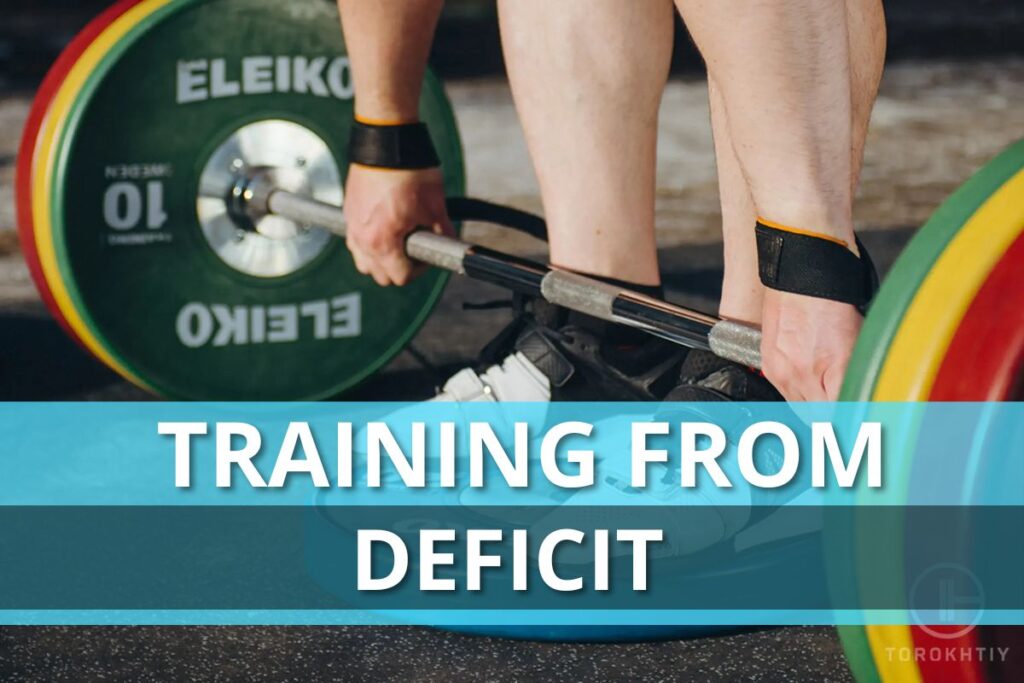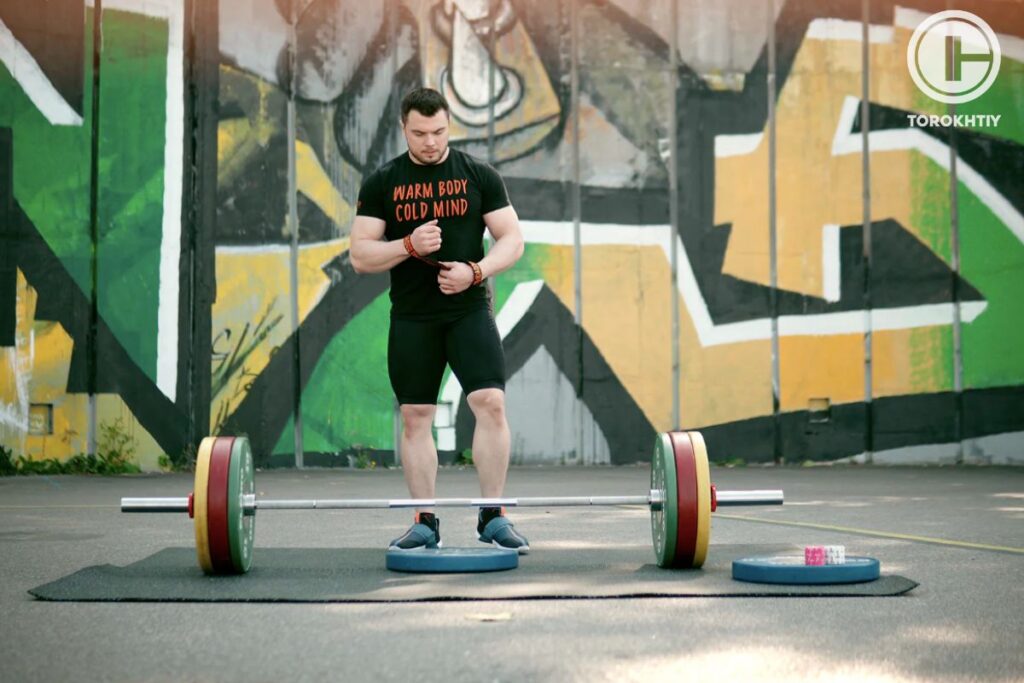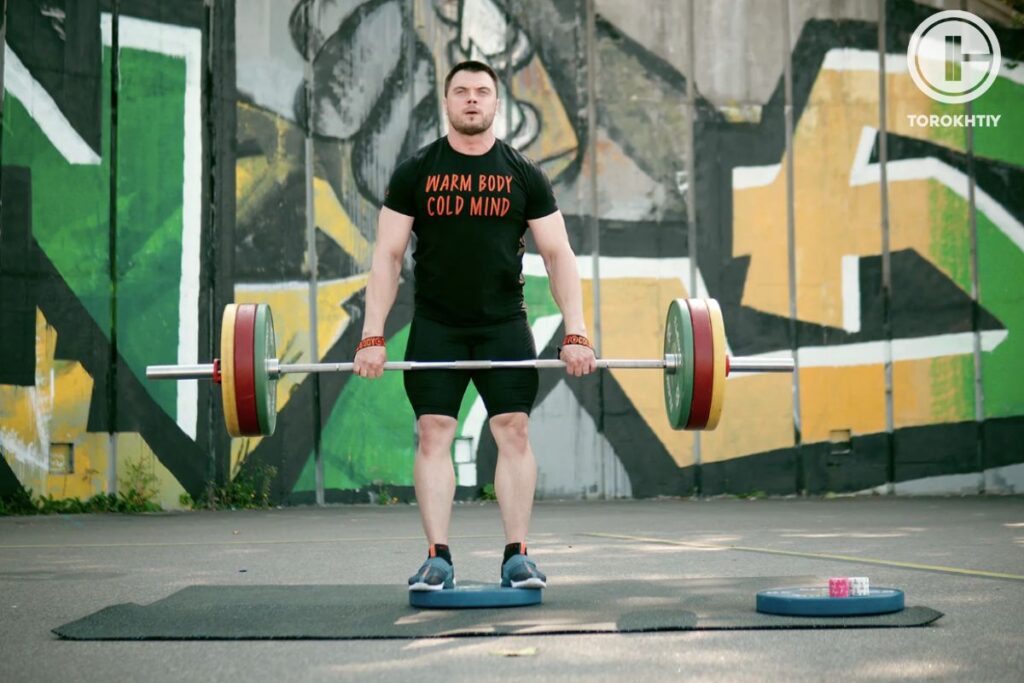Training From Deficit
Author:
Unlock your full potential by engaging with our experts and community! Have questions about your fitness journey or looking for expert advice on weightlifting techniques? Don’t hesitate — leave a comment below and Sergii Putsov will provide a personalized answer and insights to help you reach your goals.
Torokhtiy is reader-supported. Some links are affiliate links, and we may earn a commission at no extra cost to you. See our disclosure page for details.

Every thinking athlete and coach is constantly looking for tools and methods to improve the quality of training and increase the result. The most common solution is to vary the parameters of the volume and intensity in the training schedule. Simply put, in some cycles we plan more reps and sets, in others we increase the working weight, then we combine and vary all this in combination with days of rest and boom, we have progress. If only it were that simple).
In the training process, the body of young athletes changes, adaptation to exercises, and techniques occur. This can lead to a decrease in strength and power indicators, as well as a “plateau”. The slowdown and stabilization of results are essential for athletes and the search for solutions to this problem is always relevant.
Follow us!

Free!
Get a 2-week Weightlifting Program as a bonus for the subscription to kickstart your training plan!

Free!
Working methods for overcoming the “plateau” are 2 more time-tested tricks:
You may like it:
- Detailed Olympic Weightlifting Program For Beginners
- 12-Week Weightlifting Program For Women (Detailed Example)
- Create Your Olympic Weightlifting Program (Examples Included)
- Increase TUT (time under tension). A longer period of stress on a muscle contributes to an increase in its performance, as well as the release of its own anabolic hormones (testosterone and growth hormone). Obviously, when an athlete does a barbell exercise for 60 seconds instead of 20 seconds, it will create additional stress. Most often in weightlifting, an increase in TUT occurs due to tempo variations (slow movement, fast up – slowly down) and the addition of pauses in different phases of movement;
- Exercises from the deficit. This increases the range of motion and turns common exercises into absolutely killer and highly effective exercises.

Deficit training is a must for athletes with a weak lower back who have difficulty during the lift off or simply lack the overall physical strength and power to accelerate the barbell in the first pull.
So now we will discuss why this method is worth trying for every athlete, what stage of preparation it is desirable to practice it in a training program and what are the general benefits of deficit training?
- Increase the strength of the leg muscles. Pulls from a deficit is a must-have exercise in both weightlifting and powerlifting. One of the reasons for its effectiveness is the increased load on the leg muscles. The starting position forces the athlete to bend the hip, knee, and ankle joints more, which in turn increases the range of motion. Greater flexion in the knee joint provides more extension and involvement of the quads.
- Strengthening the lower back and the entire back line of the trunk. Greater flexion of the hip joints and, accordingly, a lower starting position results in a greater forward bend of the trunk. The correct and safe execution of the pull movement is impossible with a weak lower back and back line of the torso. Working in “such angles” with a greater amplitude forces the athlete to develop and maintain maximum tension in the muscles of the lower back, which subsequently results in the development of strength in the back muscles.
- Greater force production. The powerful acceleration of the barbell in the pull is an essential condition for a quality snatch and clean. Deficit training forces the athlete to push the barbell from very closed joint angles, which in itself makes the movement much more difficult. By increasing the strength and quality of movement at a greater amplitude, greater inclusion of muscle fibers is also provided, which subsequently leads to an increase in the result in competitive exercises.
- Improving the starting position. The most practical benefits of working from deficit are increased strength, balance, and control in the starting position, which are essential for a strong and safe pull.
In our training programs aimed at increasing the strength potential, this method is widely used!
When and How to use deficit training?
As already mentioned, all deficit exercises are inconvenient and disgusting. And it is true. But using this method shows excellent results!
In weightlifting, both strength exercises (snatch and clean pulls) and dynamic ones: clean and snatch exercises are performed from a deficit.
It is most rational to plan this work during the preparatory period when athletes are developing the basis for a new result.

The specificity of pulls from a deficit is that even when working with a weight of 90%, recovery is much longer than from common ones. With regard to the selection of the correct load and weight, if the athlete is not able to perform technically correctly, the load must be reduced. This is especially true for snatch pulls: the load should be selected so that the athlete can work with normal biomechanics and movement speed. Otherwise, there won’t be many benefits of such an exercise.
Working from a deficit in clean variations and snatch exercises helps to improve technique and “cure” many technical mistakes:
– “teaches” an athlete to endure a long and heavy pull before the power position, the ability to be technically stable when it’s difficult, an important condition for progress and new results.
– snatch and clean from deficit “helps” to work out full extension (extension in the knee joints) in conditions of discomfort, since many athletes, as soon as the bar becomes heavy, begin to “shorten” the movement;
It is important to know that weightlifters with poor mobility may have trouble getting into a correct and safe starting position. In such a situation, it is important for the coach and the athlete to understand whether the athlete is, in principle, able to work from a deficit? Lifting from deficit have time and place in almost every weightlifter training journey.
It’s an amazing tool – one of the most effective ones – in your toolbox if you need to improve the bottom of your deadlift, the initial pull or the first pull in case of olympic weightlifting. That being said you need to have proper mobility and strength to do so because higher deficit puts athlete in a great disadvantage.
Deficit usually ranges from 2-4″ but majority of the athletes should not go more than 2″. 4″ deficit should be reserved for athletes that are already experienced with 2″ deficit and also have high level of strength. Remember that pulling from deficit if you are lacking in necessary strength in your posterior chain and mobility, can do more harm than good.
And of course, pulls from the deficit, you should mainly work with straps in order to fully concentrate on the technical performance. Dynamic exercises can be performed both with the “hookgrip” and with the straps. It all depends on the goals.
To summarize, the training method from a deficit is definitely working and necessary. It is advisable to plan its use in the preparatory period, no more than 1-2 pulls in 2 weeks. Dynamic exercises can be done more often, but with the flexibility and mobility of the athletes in mind.
You might be interested in:
Why Trust Us?
With over 20 years in Olympic weightlifting, strength training, nutrition coaching, and general fitness our team does its best to provide the audience with ultimate support and meet the needs and requirements of advanced athletes and professional lifters, as well as people who strive to open new opportunities and develop their physical capabilities with us.
By trusting the recommendations of our certified experts in coaching, nutrition, and sports training programming, as well as scientific consultants, and physiotherapists, we provide you with thorough, well-considered, and scientifically proven content. All the information given in the articles concerning workout programming, separate exercises, and athletic performance, in general, is based on verified data.
The product testing process is described in more detail here.
Author: Sergii Putsov
Head of Sport Science, PhD
Best Results: Snatch – 165 kg,
C&J – 200 kg
Sergii Putsov, Ph.D., is a former professional weightlifter and National team member, achieving multiple medals in the 94 kg weight category at national competitions. With a Master’s degree in “Olympic & Professional Sport Training” and a Sport Science Ph.D. from the International Olympic Academy, Greece, Sergii now leads as the Head of Sport Science. He specializes in designing training programs, writing insightful blog articles, providing live commentary at international weightlifting events, and conducting educational seminars worldwide alongside Olympic weightlifting expert Oleksiy Torokhtiy.




What if lifts from deficit are easier than from the floor? Since you have more acceleration. Then what?
Although I haven’t tried 10-12 cm deficit, didn’t know it existed.
Hi @Ana!
If lifting from deficit result in better/stronger lift, I’d personally look closer into your starting position with regular lift.
Maybe there is room for improvement in the position that will result in mechanical advantage that you’re actually applying in your deficit version. That being said my deficit is usually around 25kg plate which is ~8cm. Record both lifts and look for improvement.
The case is not really about acceleration but people in general can lift much less (1RM) from deficit.